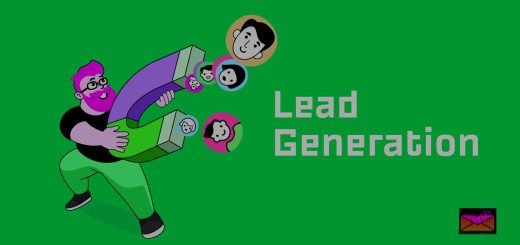How To Write a Problem Statement (With an Example)
When employees show their initiative and problem-solving skills, they are demonstrating the ability to handle complex or unanticipated challenges in the workplace. Companies rely on individuals and teams who can assess problems effectively and propose viable solutions.
In this article, we offer instructions to help you create a problem statement and we include a comprehensive example you can use for reference.
Video: How to Write a Problem Statement: Solve Work Challenges
Watch this video to understand best practices and use this guide to write a professional problem statement at work!
What is a problem statement?
A problem statement is a statement of a current issue or problem that requires timely action to improve the situation. This statement concisely explains the barrier the current problem places between a functional process and/or product and the current (problematic) state of affairs.
This statement is completely objective, focusing only on the facts of the problem and leaving out any subjective opinions. To make this easier, it’s recommended that you ask who, what, when, where and why to create the structure for your problem statement.
This will also make it easier to create and read, and makes the problem at hand more comprehensible and therefore solvable. The problem statement, in addition to defining a pressing issue, is a lead-in to a proposal of a timely, effective solution.
Related: What Is a Problem Statement: Definition, How-To and Example
How to write a problem statement in 7 steps
A problem statement is a tool used to gain support and approval of the project from management and partners. As such, it must be accurate and clearly written. There are a few key elements to keep in mind when crafting a problem statement that can have a positive impact on the outcome of the project.
- Describe how things should work
To begin, you’ll want to provide some context that will make it easier to understand the problem. Start by explaining how this particular process should work. Concisely describe how the process would function if the current problem didn’t exist before mentioning the problem, keeping the end-user in mind.
For example, let’s say that you have an idea of how to increase efficiency in a process to maximize the best use of resources. You might begin by describing a theoretical situation in which the system is more efficient and working toward your proposal from there, always keeping in mind who, what, when, where and why to keep yourself on track.
Related: What Are Problem-Solving Skills? - Explain the problem and state why it matters
The problem statement should address not only what the problem is, but why it’s a problem and why it’s important to solve it. This will wrap the other ‘W’ questions in organically, in most cases. For example: Why should we fix this problem? Because it affects the efficiency of departments X, Y and Z, wasting resources and driving prices up for consumers.
This addresses what the problem is, who is affected and why the problem should be fixed. You may also consider including what attempts have already been made to solve the problem and why they didn’t work out. As concisely as possible, explain everything you know about the current problem.
Related: Persuasion Skills: Definition and Examples - Explain your problem’s financial costs
When you state the problem to decision-makers, you’ll want to explain the costs of not fixing it. Seeing as money is the language in which businesspeople communicate, it’s easiest to frame the problem and proposed solution in terms of financial costs.
For example, if the problem is actively costing unnecessary money, preventing the company from making more money or damaging the company’s public image (indirectly costing money) make sure you explain it specifically and clearly in terms they understand. Try to pinpoint exact dollar amounts for the problem’s cost.
Related: 12 Approaches To Problem-Solving for Every Situation - Back up your claims
Once you claim the problem is costing the company money, you must be prepared to support your claims with evidence. If you neglect this step, you may not be taken seriously. Do your research, cite your sources and have the data ready to present. - Propose a solution
The problem statement should describe your proposed solution(s) to the problem. At this point, you won’t be focused on finding a single solution, but you should have a solid grasp on the causes of the problem and be prepared to propose practical approaches to understanding and remedying it. State your objectives by suggesting well-thought-out plans for attacking the problem.
Related: How To Use Problem-Solving and Decision-Making Skills at Work - Explain the benefits of your proposed solution(s)
Now, you’ve described an ideal scenario in which the problem doesn’t exist. You’ve pointed out the problem, explained the ramifications of choosing not to fix it (using dollars and solid data) and proposed some realistic approaches to finding a solution.
Now is a very good time to demonstrate why this solution will work, again focusing on efficiency and the financial impact of your solution. Address what expenses the solution will decrease, how this solution will free up revenue streams and what intangible benefits, such as increased client satisfaction, your solution will bring. This should all fit into a single short paragraph. - Conclude by summarizing the problem and solution
Now you’ll move on to your conclusion. This should consist of the problem, why it needs to be fixed and a summarized argument of why your solution is the best answer to the problem.
Following this format will help all parties who read it to understand the problem and be open to considering the best solution.
Related: Problem-Solving Skills: Definitions and Examples
Example of a problem statement
Problem statements usually follow the same general format, though they can fluctuate in length depending on the complexity of the situation. Here’s an example of a basic problem statement:
Problem: Voter turnout in the southwest region of Florida has been significantly decreasing over the past decade, while other areas of the state continue to see increasing numbers of voters at the polls.
Background: Surveys conducted by the Florida Voter’s Association suggest that voter turnout is lowest among people between the ages of 18 to 25 and low-income households (making under $30,000 annually for a two-person household). The research conducted on voting patterns in other southern U.S. states suggests that this could indicate a broader trend, but this region’s demographics suggest that it could become a more significant problem [expand and explain with sources].
Other parts of the country have made attempts, and succeeded, to a degree, to improve voter turnout, but similar solutions haven’t had the desired effect here in southwest Florida [cite sources]. More research is needed on the reasons these attempts have failed and what strategies might have more of an impact on reaching younger and lower-income households.
Relevance: Areas with low voter turnout have historically been shown to have lower levels of social cohesion and civic engagement and higher numbers of instances of civil unrest. More recently, this has become increasingly concerning for parts of the U.S. [give examples and cite sources].
Data shows that when certain parts of society lack political representation, they’re more likely to become increasingly disillusioned over time, eroding society’s trust in democracy and systematically triggering challenges in governance [explanation and sources]. Addressing this problem will give regional parties much-needed insights to help them adjust their policies and campaign strategies to include more of the residents of this region. It will also contribute to gaining a more nuanced understanding of voter behavior trends.
Objectives: The purpose of this research is to examine proactive engagement plans to increase voter turnout in the southwest region of Florida. It will distinguish the largest determinants in non-voting through surveys, interviews and social experiments designed to observe the impact of each of these strategies on voter turnout.
Related: How To Write Research Objectives (With Tips)
When to use a problem statement
Problem statements are important to define and understand a problem and develop possible solutions. These statements also provide important information that is crucial in decision-making in relation to these projects or processes.
Here is when you should use a problem statement:
To clarify expected outcomes
The problem statement not only identifies the problem and proposed solution, it also clarifies the expected outcome. Establishing what the desired solution would look like helps provide an overarching idea about the project. The proposed solution and scope and goals of the solution are made clear through this statement.
Related: Analytical Skills: Definitions and Examples
As a project guide
The problem statement provides a guide for navigating the project once it begins. It is continually referenced throughout the duration of the project to help the team remain focused and on track.
Near the completion of the project, this statement is again referred to in order to verify the solution has been implemented as stated and that it does indeed solve the initial problem. This can help in making sure that proper steps are being taken to prevent the same problem from happening again in the future.
Related: A Complete Guide to Project Management
Get interview-ready with tips from Indeed
Prepare for interviews with practice questions and tips


